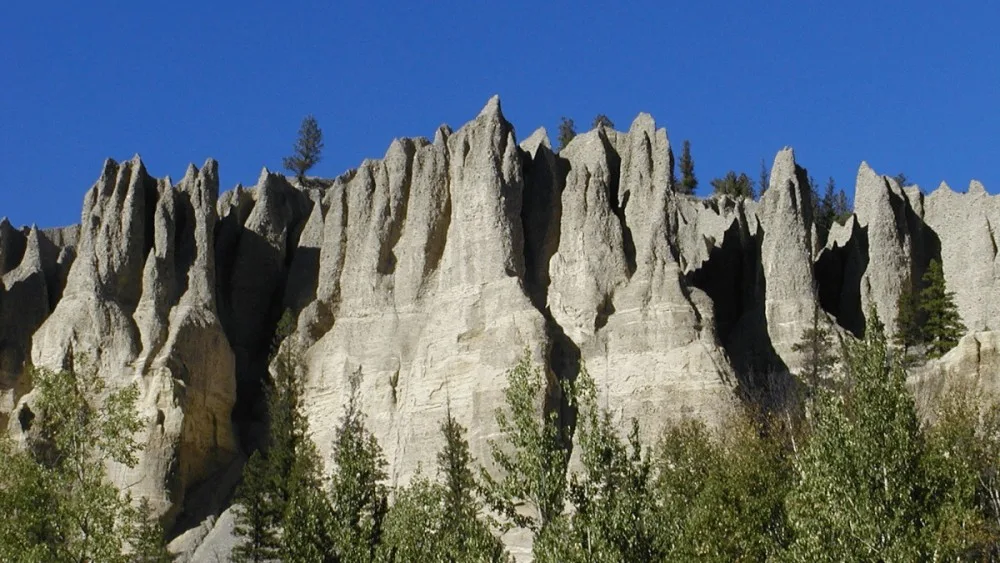DAVIS CYCLE OF EROSION
William Morris Davis, an American geomorphologist, was the first geomorphologist to present a general theory of landform development. According to Davis landform and slope are a function of structure process and time. It is called the Trio of Davis. The landscape is a function of structure, process, and time.
Structure –Structure reflects properties of a highland generated by endogenetic processes. These properties include relative hardness and softness of rocks, stiffness of slope, altitude, presence of joints, fractures, faults, etc.
Process- Process reflects the work of exogenetic processes. Davis cycle of erosion specifically deals with fluvial processes/ erosional transportation and depositional processes connected with rivers and streams. These exogenetic processes transformed a highland produced by endogenetic processes into a lowland.

Time-time reflects the entire period involved in transforming a highland and steep slopes into a lowland without slopes. This entire time/ period is divided into 3 stages:
- Youthful Stage
- Mature Stage
- Old stage
There is the development of a cycle of erosion concerning the presumptions:
- Landforms and slopes are developed due to the interaction between endogenetic and exogenetic forces.
- There is sequential and orderly development of landforms and slopes.
- There is short-term and rapid upliftment of landmass on which the geo-cycle of erosion works.
- The geographical cycle of erosion starts once the upliftment of the highland is completed
- Erosional work of rivers and streams does not occur below the baseline.
- The second cycle of erosion doesn’t start before 1st cycle of erosion is completed.
In respect of these pre-conditions, Davis had described three stages of geographical cycles.
Youth stage
Youthful stages start a short period of upliftment and are completed in the diagram short period of upliftment has been indicated as old. Youthful stage vertical erosion with transportation dominants as the potential and kinetic energy of the fluvial system is generated.
As vertical erosion dominated there was no change in the altitude of the summit of the river. With vertical erosion, there is a rapid decline in altitude of a bed of river valley becomes deep and steep and this valley is known as a V-shaped valley with a convex side slope. Landforms associated youthful stage are formed in the mountain course of a river. Rapid downcutting and decline of a bed of river which increases the slope of the river valley.

Mature stage
It is dominated by lateral erosion with transportation of lateral erosion works on both aspects of the river valley reducing the altitude of the summit, reducing the altitude of the bed, and reducing slope, wide and shallow valleys. The marked reduction in valley deepening is because of a substantial decrease in channel gradient, flow velocity, and transporting capacity of the rivers.
Old stage
It dominates with lateral erosion with transportation there is the decline of altitude of the summit, bed, and slope valleys are extremely wide and shallow with the deposition of river channel it is divided into several sub-channels which are called distributaries. Highland is transformed into a features lowland/ erosional plain called peneplain.
Low altitude, low slope relatively scattered highlands separated one fluvial system from another these highlands are called Monadnocks. Thus, Davis’s cycle of erosion describes a combined process of decline of landform and slope as the geographical cycle of the erosional process.

MERIT OF DAVIS CYCLE OF EROSION
- This theory is a simple generalized and standardized model to describe explain and predict landforms and slopes.
- This theory is based on the classification of landforms and slopes.
- This theory provides an integrated view of the development of landforms and slopes. E.g. integrating concepts like structure, process, and time.
- It also describes and explains denudation chronology.
DEMERITS
- This theory is criticized based on an oversimplification of pre-assumption and its test done in respect of real geomorphological processes.
- This theory ignores the importance of structure and dynamics of stricture information of landforms and slopes
- According to this theory cycle of erosion starts once upliftment is completed. However in reality upliftment and erosion continue together.

